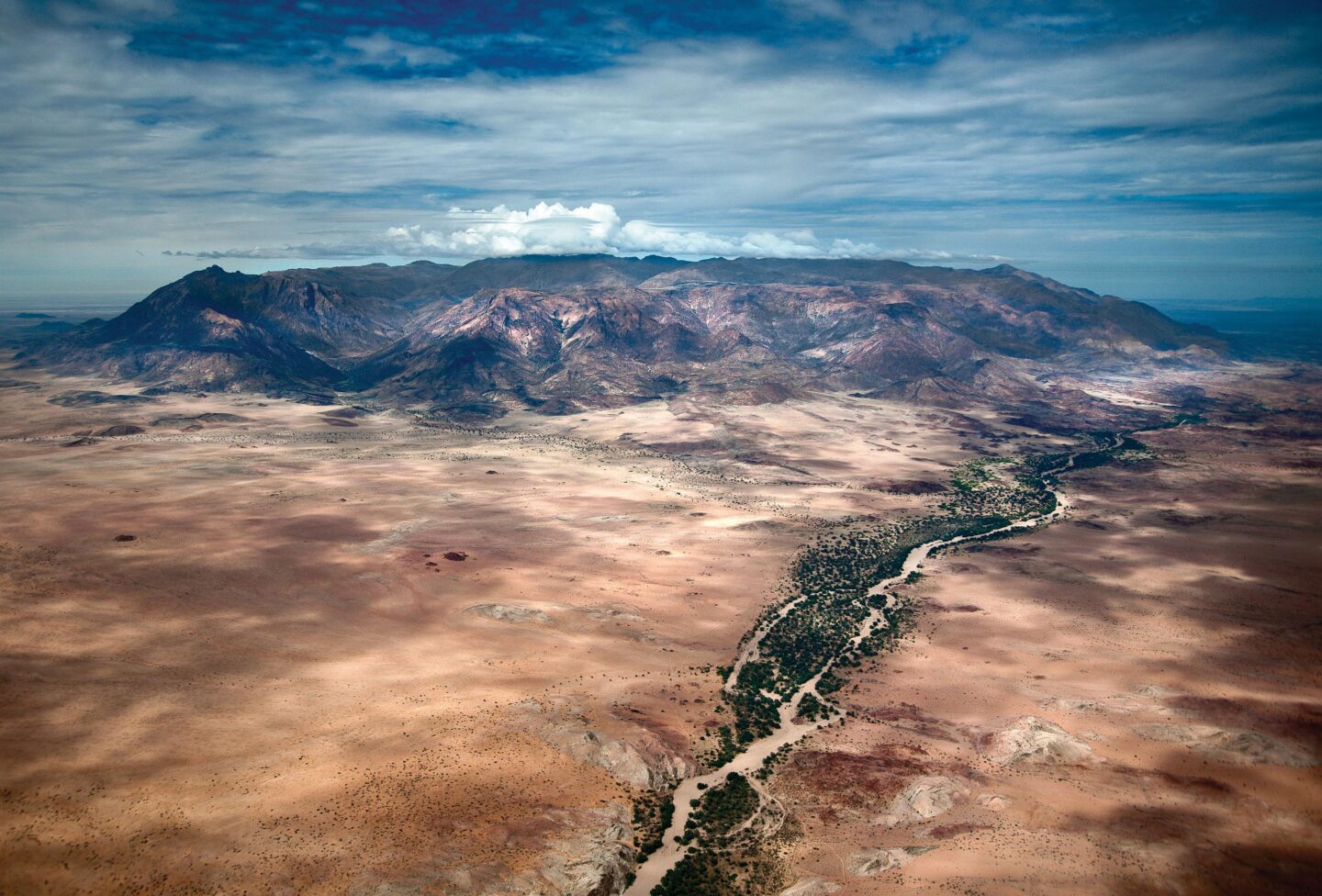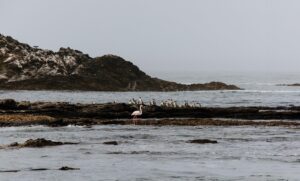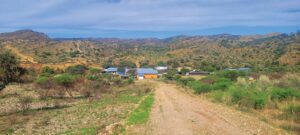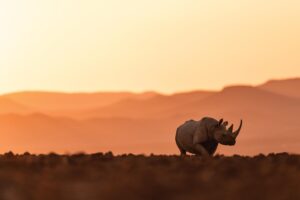

THE VIEW FROM HERE
Chasing the moon around the burning mountain
Brandberg, Dâures or Omukuruvaro is what the granite inselberg and highest mountain in Namibia is called by the locals who live around it today. It quite literally means “burning mountain”.
Text Rièth van Schalkwyk | Photographs Paul van Schalkwyk
From the Spring 2021 issue
Ever since our children were toddlers we travelled to the northern Namibian wilderness, with the Brandberg always our beacon to mark the start of these adventures. I treasure the memories of one of our first trips during a particularly good rainy season. We travelled right around the mountain after some good showers and entertained our children by having them float down rivulets in a bucket and washing their mud- covered bodies in a pool we dug in the sandy patches along the edge of the riverbed. We had to navigate the Ugab River expertly not to get stuck, as that could have easily ended up in us being stranded for days. Both the mountain and the river are treacherous. Do not underestimate either – whether on foot or on four wheels – especially during the rainy season. Following tracks through thick reed patches can be very risky even long after floods.
Years later and during a drought cycle which lasted many years (rivulets and rain a distant memory) the mountain was not the start of our journey up north, but the destination. Ours was a five-day quest to follow the moon around the Brandberg.
Every camping spot was carefully chosen for a different view of the mountain, the sunrise, the sunset, or the moon rising or setting over the horizon.
We know from countless previous trips that if you wake up early enough and find the right spot with the perfect view on the mountain the joy of seeing why this mountain is called Brandberg will be yours. Of course, the ancient inhabitants knew the mountain was not really on fire, but fire was the closest description for this unexpected and fleeting sight.
This kind of camping trip is a luxury even for those who live in Namibia and have travelled extensively. It is for those lucky enough to be able to choose the right season, who have the time to explore at leisure with no rush to fit in the “top ten” and tick off the “must sees” in a jam-packed itinerary and who have the freedom to choose the right spot at the right time for a lunar delight.
We started off five days before full moon after making sure it was not going to rain in Damaraland and camped around the island mountain to follow the waxing moon.
The trip was meticulously planned so that, on the day before full moon, we would pitch camp at the perfect spot with an unobstructed view towards the east as well as the west, because the highlight on the morning leading up to full moon is to see the moon sink through the inversion layer in the west as the sun rises in the east to set fire to the mountain.
Then, towards the end of the same day, the ultimate magic – watching the moon rise, painted gold by dust particles of the dry season, lighting up the mountain in all its multi-faceted glory. A picture of smooth granite glazed in the light of the rising moon etching the deep crevices as black shadows of mystery.
There is much more to the Brandberg and the Ugab than the moon. Ask any adventurer who had the courage to climb to Königstein, sit in the Lufthöhle where Harald Pager spent hours tracing rock art sites. To drive along the riverbed and its tributaries is a special experience. You may encounter elephant, hear the roar of a lion at night or find tracks in the soft sand. But the magic of this mountain is the evidence of its ancient geological history. Even the plants look as if they have been there for hundreds of years. If it was not for the cycles of the sun and the moon one could almost be tricked into thinking that time stood still around this mountain. TNN
Follow Rieth’s travel and camping adventures in this new TNN series.
Send your questions, or your own camping experiences: ✉️






